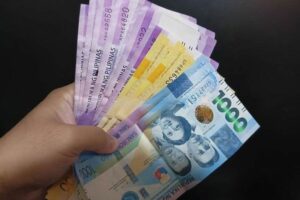BANK LENDING growth eased to a nine-month low in August as loans for business activities expanded at a slower pace, the Bangko Sentral ng Pilipinas (BSP) said on Thursday.
Outstanding loans from universal and commercial banks to businesses and individual consumers, net of reverse repurchase agreements, expanded by 11.2% year on year to P13.62 trillion in August, slower than the 11.8% growth in July, preliminary BSP data showed.
This was the slowest growth since the 11.1% increase in November 2024.
On a seasonally adjusted basis, loans inched up by 0.4% month on month.
Lending to residents went up by 11.6% year on year in August, easing from 12.4% in July, while outstanding loans to nonresidents, which include those disbursed by big banks’ foreign currency deposit units, declined by 5.9%, improving from the 8.1% drop recorded the previous month.
Loans for production activities increased by 9.9% year on year to P11.51 trillion in August, slowing from the 10.8% growth seen in July. These made up 84.6% of the end-August outstanding loans of big banks.
The expansion was driven by increased lending to the following industries: electricity, gas, steam, and air-conditioning supply (up by 28.1% year on year); real estate activities (11%); wholesale and retail trade, repair of motor vehicles and motorcycles (8.1%); information and communication (7.5%); and financial and insurance activities (6.9%).
Meanwhile, outstanding consumer loans to residents, which include credit card, motor vehicle, and general-purpose salary loans, grew by 23.9% to P1.79 trillion in August, slightly faster than the 23.6% growth the month prior. These comprised 11.7% of the total.
This was mainly driven by the 29.7% jump in credit card loans to P1.07 trillion and the 19% increase in motor vehicle loans to P513.06 billion.
“The BSP monitors bank loans because they are a key transmission channel of monetary policy. Looking ahead, the BSP will ensure that domestic liquidity and bank lending conditions remain consistent with its price and financial stability mandates,” the central bank said.
Michael L. Ricafort, chief economist at Rizal Commercial Banking Corp., said in a Viber message that despite the slower growth, the double-digit increase in lending is “still a good sign for the economy as a bright spot or growth driver.”
LIQUIDITY GROWTH PICKS UPMeanwhile, liquidity growth picked up to a seven-month high in August, separate BSP data released on Thursday showed.
Domestic liquidity or M3 — a measure of the amount of money in the economy that includes currencies in circulation, bank deposits, and other financial assets easily convertible to cash — increased by 6.6% year on year to P18.6 trillion in August, faster than the 6.2% growth recorded in July.
This was the fastest pace of expansion seen since the 6.8% growth logged in January.
On a month-on-month seasonally adjusted basis, M3 increased by 0.5% in August.
Mr. Ricafort said the increase in money supply is consistent with the sustained growth in bank lending and also came amid the BSP’s monetary easing cycle.
“As a driver of money supply, claims on the domestic sector, which includes private and government entities in the country, rose by 9.8% year on year in August from 10.5% in July,” the BSP said. Claims represent a sector’s liabilities to depository corporations like banks and the central bank.
Claims on the private sector climbed by 11.1% in August from 11% in July, “driven by the continued expansion in bank lending to nonfinancial private corporations and households.”
Net claims on the central government rose by 6.1%, slower than the 7.1% expansion in the previous month, and were driven by higher borrowings.
Meanwhile, net foreign assets (NFA) in peso terms went up by 4.8% year on year in August, a turnaround from the 0.6% decline in July. NFAs reflect the difference between depository corporations’ claims on and liabilities to nonresidents.
The central bank’s NFA rose by 0.7%, while banks’ NFA surged by 45.1% amid a decline in their foreign currency-denominated bills payable. — K.K. Chan
